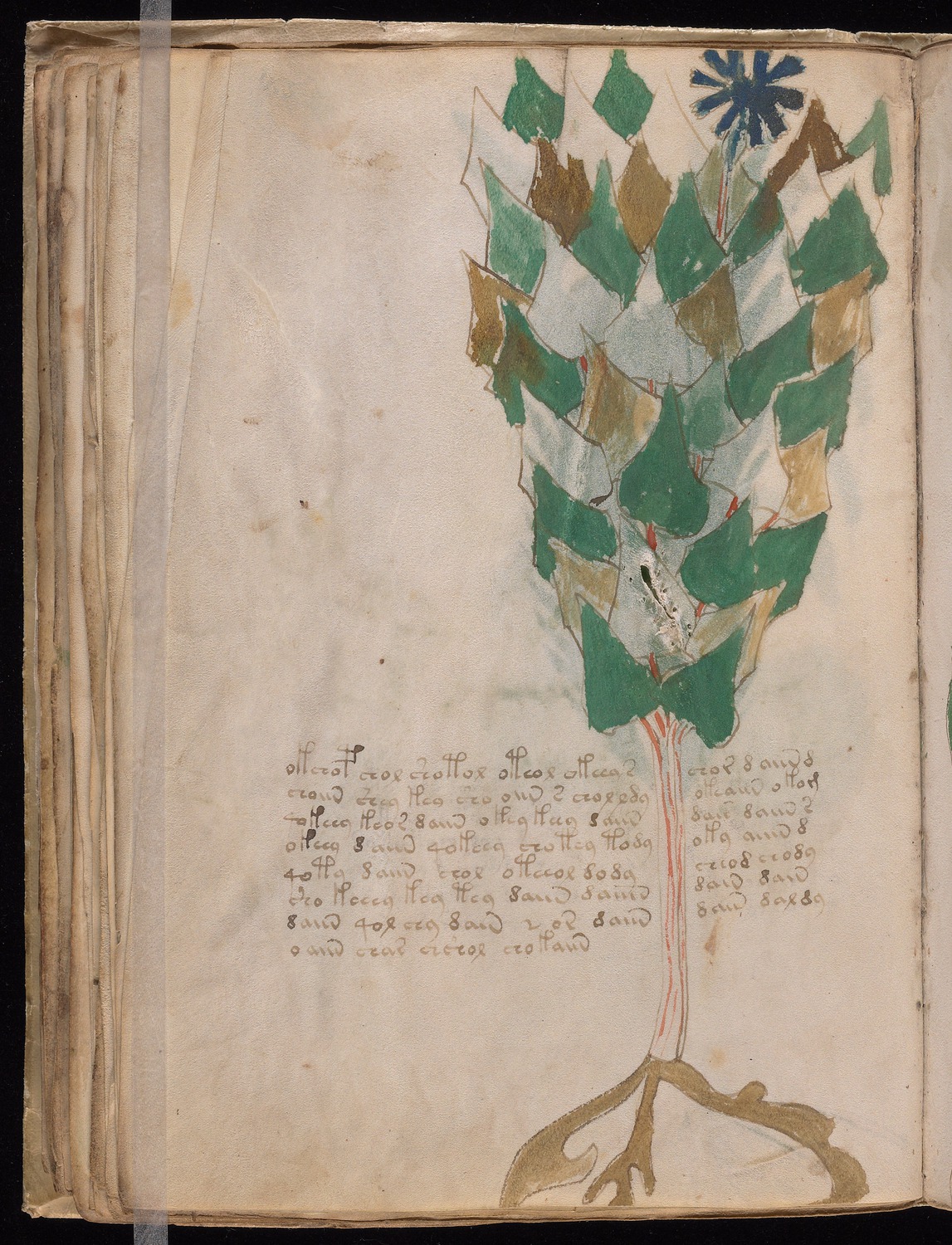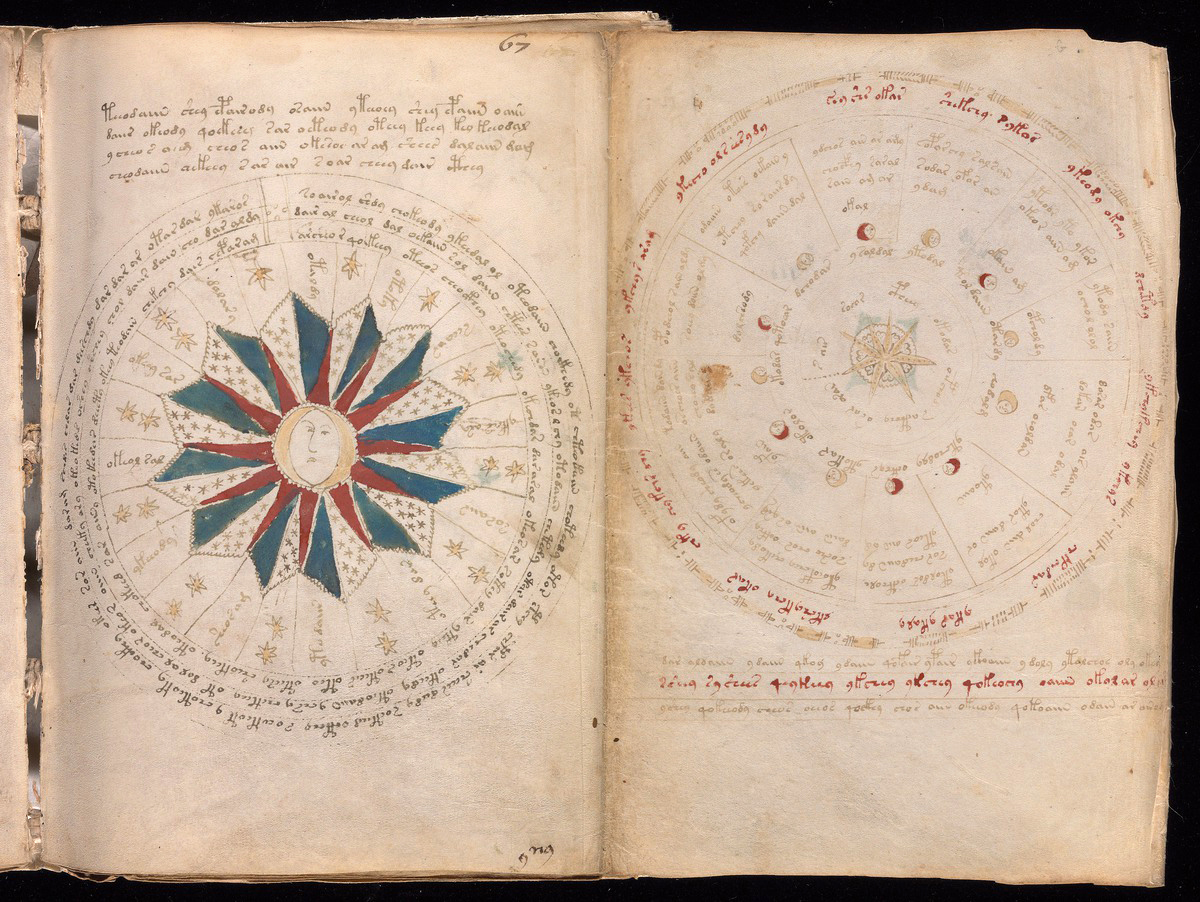Voynich manuscript is a mysterious codex, or volume, of about 240 pages of handwritten text and illustrations. The text is written in either an unknown language or is a coded message in symbols not used by any known alphabet. Many cryptographers (experts on codes and ciphers) have tried to decipher the text, without success.

Most experts divide the Voynich manuscript into six sections. Scholars call these sections (1) the botanical section (also called the herbal section), (2) the astronomical section, (3) the biological section, (4) the cosmological section, (5) the pharmaceutical section, and (6) the recipe section, after the illustrations in each section. Many of the illustrations are of plants and stars. However, the pictures are often difficult to interpret. Some illustrations seem to show the signs of the zodiac. The zodiac is a set of 12 constellations that mark the yearly path of the sun through the sky. The biological section also contains a number of drawings that look like human organs and some drawings of people.

The text contains about 170,000 glyphs (symbols) written from left to right. Analysis of the text indicates that it has many of the characteristics of written language. For example, the distribution of word lengths in the manuscript is similar to that of known languages. The glyphs also follow each other in a predictable fashion. However, some characteristics suggest the manuscript may not be a true written language. The manuscript lacks common word orders, and certain glyphs are only used on the first line of paragraphs.
The origins of the manuscript remain largely unknown. The Polish-American bookseller Wilfrid Voynich purchased the codex in 1912 from a Jesuit order, which had kept it for an unknown time. Voynich believed it was the work of Roger Bacon, a famous scholar of the 1200’s. However, scientists have used radiocarbon dating to determine that the pages of the Voynich manuscript come from the early 1400’s. The ink used to write the book has been dated to about the same period. The pages are made of vellum, a calfskin parchment used to make smooth, durable pages that hold ink well. The ink was made from iron and tannic acid extracted from galls (growths) on oak trees. Such iron gall ink was common in Europe and later in the Americas from the 500’s to the 1900’s.

Some scholars believe the Voynich manuscript is written in either a made-up language or a previously unknown language. The American cryptographer William F. Friedman organized a group of experts in the 1940’s and again in the 1960’s to try to decipher the text. They transcribed the text onto computer punch cards, reducing the number of glyphs to about 20 to 30 distinct letters. They tried various methods of statistical analysis but failed to determine what type of cipher might have been used.
Another popular theory is that the entire manuscript is a hoax. Some experts think the manuscript was written either by some unknown hoaxer of the 1400’s or by Voynich himself using materials from that era. Few cryptography experts support the hoax theory. They argue that it is difficult to develop such a convincing fake language.
Most cryptographers agree that the Voynich manuscript is really some sort of coded text in an unknown cipher. In 2017, a medieval scholar proposed that the manuscript was a book of herbal remedies and therapies for women written in an abbreviated form of Latin. In this form, which was sometimes used in the Middle Ages, individual characters refer to whole words. Many of the illustrations of people in the manuscript show them immersed in water, perhaps bathing. Soothing or herbal baths have been used as a remedy for many ailments since ancient Roman times. The plant images in the manuscript may refer to herbal preparations or even aromatherapy, common in many traditional forms of medicine. Other symbols in the manuscript relate to the signs of the zodiac, which has long influenced aspects of ancient medicine. Not all scholars agree with this interpretation. However, no person has been able to fully decipher the Voynich manuscript.
